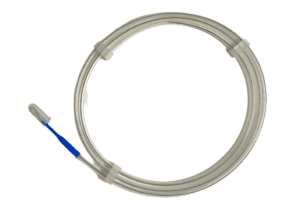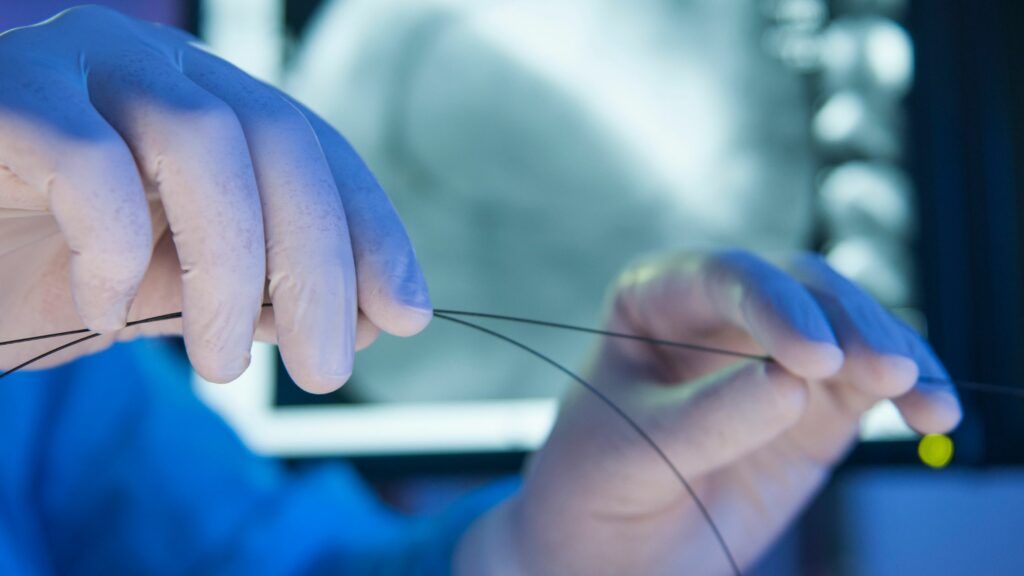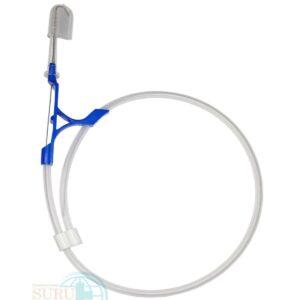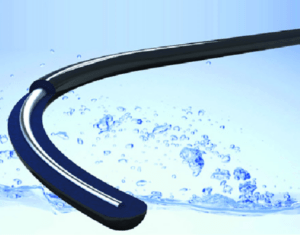Medical professionals are increasingly turning to minimally invasive surgical procedures due to their numerous advantages. One key component of these procedures is the use of guidewires. Guidewires are thin, flexible wires that are used to guide medical devices through the body during minimally invasive procedures. Guidewires are used in various medical procedures, such as vascular interventions, endoscopy, and catheter placements etc. A variety of medical interventions use them, from heart surgery to brain surgery. Here we explore the various types of medical guidewires available and their uses. In this blog, either medical professionals or patients will find the information they need to make informed decisions about guidewire use.
At the end of this blog, we will also introduce Medzell, a futuristic B2B platform for promoting Indian medical devices in emerging markets. Medzell offers a range of high-quality medical devices, including guidewires, at competitive prices. So, let’s dive in and explore the world of guidewires!
Common types of Guidewires
They are designed to help guide and navigate other medical instruments through the body’s pathways. Here are some common types of guidewires.
- Hydrophilic Guidewires: These guidewires are equipped with a hydrophilic coating that exhibits a unique property when exposed to moisture. This coating renders the guidewire slippery, facilitating smoother navigation through blood vessels and other bodily passages. The increased lubricity offered by the hydrophilic coating reduces friction, making it easier for medical professionals to guide the wire through the intricate pathways of the body.
- Hydrophobic Guidewires: In contrast, hydrophobic guidewires are intentionally engineered to repel moisture. This characteristic proves advantageous in situations where procedures take place in dry or non-fluid environments. By repelling moisture, these guidewires maintain their tactile properties and navigational effectiveness, ensuring precision during delicate medical interventions.
- J-Tip Guidewires: Guidewires with a J-shaped tip design offer distinct advantages in terms of maneuverability and control. The J-shaped tip enhances navigation through vessels or ducts by providing a point of guidance, enabling medical professionals to smoothly direct the wire along the desired path. This design is particularly useful when navigating through intricate or tortuous anatomical structures.
- Straight Tip Guidewires: Guidewires featuring a straightforward, linear tip design are ideal for procedures that require simple insertions and pathways. The straight tip facilitates the initial entry and navigation of the guidewire, making it suitable for a range of medical applications.
- Angled Tip Guidewires: Guidewires equipped with an angled tip are strategically designed to assist medical professionals in navigating through anatomical structures with varying angles and curves. The angled tip enhances precision and control, enabling the guidewire to smoothly adapt to the contours of the body’s pathways.
- C-shaped Guidewires: C-shaped guidewires are characterized by their curved or looped tip configuration. This design offers enhanced maneuverability, particularly in situations involving vessels with tortuous or complex routes. The curvature of the tip facilitates negotiation of challenging anatomical pathways.
- Tapered Tip Guidewires: Tapered tip guidewires feature a tip that gradually narrows. This tapering design aids in navigating through tight or narrow spaces within the body. The gradual reduction in tip diameter enables smoother passage through constricted passages, contributing to successful and precise procedures.
- Exchange Guidewires: Exchange guidewires serve a specific purpose in medical procedures that involve replacing one catheter or medical device with another while maintaining access to the targeted area. These guidewires facilitate the seamless exchange of instruments, allowing medical professionals to achieve their procedural objectives without the need for additional insertions.
- Micro-Guidewires: Micro-guidewires are characterized by their extremely thin and flexible construction. They find application in delicate and intricate procedures, particularly in the realm of neurovascular interventions. Due to their slender profile, micro-guidewires can navigate through intricate vessels with precision and minimal disruption.
- Angioplasty Guidewires: Angioplasty guidewires are tailored for procedures that involve navigating through narrow or obstructed blood vessels during angioplasty interventions. These guidewires are specifically designed to aid in the successful restoration of blood flow by facilitating the placement of balloons and stents.
- Urology Guidewires: Urology guidewires play a vital role in procedures related to the urinary tract, such as the placement of ureteral stents or the removal of stones. These guidewires enable medical professionals to navigate through the complex anatomy of the urinary system with accuracy.
- Biliary Guidewires: Biliary guidewires are engineered to address procedures within the bile ducts. They are often utilized in endoscopic retrograde cholangiopancreatography (ERCP) procedures, where they facilitate the safe and precise navigation of medical instruments through the bile ducts.
- Neurovascular Guidewires: Neurovascular guidewires are purpose-built for navigating through the intricate vessels of the brain and central nervous system. Their specialized design enables neurosurgeons and interventional radiologists to navigate with precision, supporting procedures that require access to delicate neural structures.
- Enteral Guidewires: Enteral guidewires serve a critical role in procedures involving the gastrointestinal tract. These guidewires facilitate the navigation of medical instruments through the digestive system, making them valuable tools in endoscopic procedures and feeding tube placements.
The choice of guidewire depends on the specific procedure, anatomical location, and the medical instrument being guided. Medical professionals select guidewires that best suit the complexity and requirements of the procedure to ensure safe and successful navigation.
Benefits and Applications of Guidewires
Guidewires are essential medical devices with a wide range of benefits and applications across various medical fields. Here are some of the key benefits and common applications of guidewires.
Benefits
- Precision and Control: Guidewires provide medical professionals with precise control over the placement and navigation of other medical instruments within the body, ensuring accurate positioning during procedures.
- Minimally Invasive Procedures: Guidewires enable minimally invasive techniques, reducing the need for large incisions and promoting quicker patient recovery times.
- Reduced Trauma: By providing a clear path for instruments, guidewires help minimize tissue trauma and damage to surrounding structures during procedures.
- Enhanced Safety: Guidewires help prevent accidental vessel perforation or damage, enhancing the safety of procedures.
- Access to Complex Areas: Guidewires allow access to hard-to-reach or intricate anatomical areas, such as small vessels, ducts, and tight spaces.
- Visual Guidance: Some guidewires are designed with radiopaque markers, allowing medical professionals to track their movement using medical imaging, such as X-rays or fluoroscopy.
- Improved Success Rates: The use of guidewires increases the success rates of various medical procedures by providing a reliable pathway for medical instruments.
Applications
- Vascular Interventions: Guidewires are extensively used in cardiology and radiology for procedures like angioplasty, stent placement, and vascular access.
- Endoscopy: In gastroenterology and other fields, guidewires aid in navigating endoscopic instruments through the gastrointestinal tract.
- Urology: Guidewires are used in urology procedures like ureteral stent placements, stone removal, and nephrostomy tube placements.
- Neurovascular Interventions: Neurovascular guidewires play a critical role in navigating through the complex blood vessels of the brain and central nervous system.
- Orthopedics: Guidewires assist in accurate placement of implants during orthopedic surgeries, such as for intramedullary nails or screws.
- Gynecology: In procedures like hysterosalpingography, guidewires help navigate through the reproductive tract.
- Pulmonology: In bronchoscopy, guidewires help guide instruments through the respiratory tract for diagnostic or therapeutic purposes.
- ENT Procedures: In otolaryngology, guidewires assist in navigating through the ear, nose, or throat for procedures like sinus surgery.
- Radiology: Guidewires are used in various radiological interventions, including drainage procedures and embolization.
- Gastrointestinal Procedures: In gastrointestinal endoscopy, guidewires help navigate through the digestive tract for diagnostic and therapeutic procedures.
Guidewires are indispensable tools that have revolutionized the field of minimally invasive medicine, enabling medical professionals to perform a wide range of procedures with increased precision and safety.
Maintaining Optimal Performance of Guidewires with Cleaners
Proper maintenance of guidewires is crucial for their optimal performance and longevity. Over time, guidewires can become contaminated with blood, tissue, and other debris, which can compromise their flexibility and shape memory. Using the right cleaners can help remove these contaminants and restore the wire’s performance.
When choosing a guidewire cleaner, it’s important to consider factors such as effectiveness, safety, and compatibility with the wire material. Besides enzyme cleaners, ultrasonic cleaners also work well for cleaning guidewires by agitating and displacing debris.
Guidewires from Leading Indian Manufacturers
LIFER Guidewire
The LIFER Guidewire – Ureteral Guidewires, a cutting-edge medical device manufactured by Sterile World Technologies LLP (SWT) in India, represents a pinnacle in high-quality design for assisting medical professionals in the insertion, positioning, and movement of catheters within the human body. Specifically engineered for navigating through tight spaces, such as obstructed valves or channels, these guidewires stand as an indispensable tool in the medical field.
Meticulous attention has been devoted to the choice of materials used in the LIFER Guidewire to ensure low toxicity and flammability. The compatibility between these materials and biological tissues, cells, and body fluids has been carefully considered, guaranteeing a safe and reliable experience for both medical professionals and patients. The materials have been selected based on their hardness, wear resistance, and fatigue strength, reinforcing the durability and longevity of the guidewire.
The primary functions of the LIFER Guidewire revolve around gaining access to and navigating through tortuous urinary tracks, showcasing its versatility and utility in various medical scenarios. The incorporation of a Nitinol core wire ensures optimal performance in both functions, combining flexibility and strength for effective catheter manipulation.
Shinewire
Shinewire is a high-quality guidewire by St. Stone Medical Devices Private Limited. This guidewire is designed to provide accurate measurement for catheter tracking, making it an essential tool for healthcare professionals. The insertion tip is smooth, making it easy to insert and remove, while its kink-resistant properties ensure that it can withstand challenging conditions. Shinewire is available in a variety of sizes, lengths, and shapes, and the guidewire dispenser with a smooth advancer ensures ease of use. Additionally, Shinewire comes with a safety cover to prevent unwanted hazard damage.
WIZARD – P Angiographic Guidewire
 WIZARD – P Angiographic Guidewire stands as a high-quality offering from Edges Medicare Pvt. Ltd., a prominent Indian manufacturer and worldwide distributor of medical consumables. This guidewire is designed to provide a smooth texture to the WIZARD’s surface and reduce friction, which reduces blood clotting. It is rotatable and Luer lock flush port ensures convenient syringe couplings, while its safety cover prevents unintended hazard damage. WIZARD is a full guidewire series designed for use in introduction spring winding, with a variety of sizes, shapes, and depths marking. Its PTFE pre-coating on the wire ensures less force is required for the wire to pass through the catheter, making it an excellent choice for percutaneous vascular access during a PTCA surgery.
WIZARD – P Angiographic Guidewire stands as a high-quality offering from Edges Medicare Pvt. Ltd., a prominent Indian manufacturer and worldwide distributor of medical consumables. This guidewire is designed to provide a smooth texture to the WIZARD’s surface and reduce friction, which reduces blood clotting. It is rotatable and Luer lock flush port ensures convenient syringe couplings, while its safety cover prevents unintended hazard damage. WIZARD is a full guidewire series designed for use in introduction spring winding, with a variety of sizes, shapes, and depths marking. Its PTFE pre-coating on the wire ensures less force is required for the wire to pass through the catheter, making it an excellent choice for percutaneous vascular access during a PTCA surgery.
4124 – Guidewires
4124 – Guidewires by SURU International Pvt. Ltd., is an affordable guidewire that comes with a floppy “Straight” or “J” Tip to prevent vessel damage. It has a uniform coating of PTFE, which affords lubricity and an easy outer floor for clean insertion. The tight specifications provide correct measurements for advanced catheter tracking, while the guidewire can transmit rotational forces from the operator’s hand to the tip. It permits form reminiscence retention of the distal tip throughout the process. There is a wide range of diameters available for 4124 – Guidewires from 0.018″ to 0.035″, making them an excellent choice for healthcare professionals seeking an affordable, high-quality guidewire
Stiff Black Cobra Wire
 Stiff Black Cobra Wire is one of the premium guidewires designed and manufactured by Medinova Endosys. This guidewire is a sterile device designed for single use, making it a safe and hygienic option for healthcare professionals. A variety of applications can be met with stiff Black Cobra Wire with outer diameters of 0.025, 0.032, 0.035 & 0.038 inches. Its stiffness ensures that it can withstand challenging conditions, while its smooth surface ensures ease of use.
Stiff Black Cobra Wire is one of the premium guidewires designed and manufactured by Medinova Endosys. This guidewire is a sterile device designed for single use, making it a safe and hygienic option for healthcare professionals. A variety of applications can be met with stiff Black Cobra Wire with outer diameters of 0.025, 0.032, 0.035 & 0.038 inches. Its stiffness ensures that it can withstand challenging conditions, while its smooth surface ensures ease of use.
Slide Nitinol Hydrophilic Guide Wire
Slide Nitinol Hydrophilic Guide Wire by MEDITECH DEVICES PVT LTD is one of India’s renowned manufacturers and suppliers of slide nitinol hydrophilic guide wire, which is available in the global market at an affordable rate. This guidewire is designed for gentle, smooth access, with a 5 cm hydrophilic tip that provides excellent lubricity and boosts tactile sensitivity while promoting smooth tracking. Its unique coating ensures opaque rays for good X-ray visibility, while its nitinol core with a high degree of elasticity prevents guide wire kinking. Overall, Slide Nitinol Hydrophilic Guide Wire is an excellent choice for healthcare professionals looking for an affordable, high-quality guidewire that can provide smooth, gentle access to the human vascular system.
Conclusion
Guidewires are an essential tool used in minimally invasive procedures, providing precise navigation through the body’s complex anatomy. Silicone-coated guidewires offer several advantages, including lubricious properties and excellent torque control. Medzell is a B2B platform for promoting Indian medical devices in emerging markets, offering a wide range of high-quality urology and interventional radiology guidewires from top brands. The platform offers competitive pricing and fast shipping, making it easy for medical professionals to purchase the necessary equipment for their procedures.






